-
 Bitcoin
Bitcoin $120400
1.77% -
 Ethereum
Ethereum $3615
7.90% -
 XRP
XRP $3.580
17.84% -
 Tether USDt
Tether USDt $1.001
0.06% -
 BNB
BNB $729.4
1.25% -
 Solana
Solana $179.9
5.04% -
 USDC
USDC $0.0000
0.01% -
 Dogecoin
Dogecoin $0.2311
8.22% -
 TRON
TRON $0.3226
4.04% -
 Cardano
Cardano $0.8490
12.85% -
 Hyperliquid
Hyperliquid $46.45
0.72% -
 Stellar
Stellar $0.4913
8.54% -
 Sui
Sui $4.027
2.00% -
 Chainlink
Chainlink $18.51
11.67% -
 Hedera
Hedera $0.2818
21.51% -
 Avalanche
Avalanche $24.03
7.40% -
 Bitcoin Cash
Bitcoin Cash $508.5
2.90% -
 Shiba Inu
Shiba Inu $0.00001496
3.24% -
 UNUS SED LEO
UNUS SED LEO $8.961
1.83% -
 Toncoin
Toncoin $3.264
3.13% -
 Litecoin
Litecoin $104.6
8.15% -
 Polkadot
Polkadot $4.389
6.11% -
 Uniswap
Uniswap $9.924
10.63% -
 Monero
Monero $337.9
0.49% -
 Pepe
Pepe $0.00001376
2.79% -
 Bitget Token
Bitget Token $4.830
2.46% -
 Ethena USDe
Ethena USDe $1.001
0.05% -
 Dai
Dai $1.000
0.02% -
 Aave
Aave $325.2
1.66% -
 Bittensor
Bittensor $423.7
-0.85%
Solana vs Ethereum for NFTs?
Solana offers low NFT minting costs and high speed, while Ethereum provides a mature ecosystem with robust tools and liquidity.
Jul 17, 2025 at 11:15 am
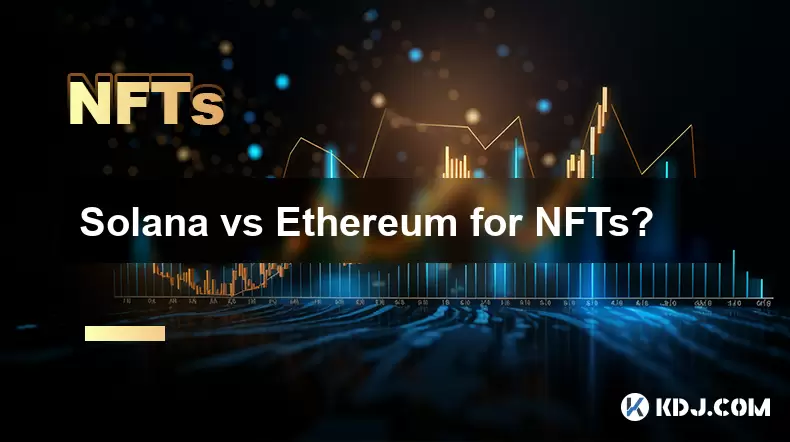
Understanding the NFT Landscape on Solana and Ethereum
The non-fungible token (NFT) space has become one of the most dynamic sectors in blockchain technology. Two major players, Solana and Ethereum, have emerged as dominant platforms for NFT creation and trading. Each offers unique advantages that cater to different user needs. Ethereum, being the first smart contract platform, has a mature ecosystem with extensive tooling and community support. On the other hand, Solana offers high throughput and low transaction fees, which can be particularly appealing for frequent NFT creators and traders.
When evaluating Solana vs Ethereum for NFTs, it's essential to consider factors like gas fees, network congestion, developer tools, marketplace support, and security. These aspects directly influence both the experience of creators and the accessibility for collectors.
Transaction Costs: A Key Differentiator
One of the most immediate differences between Solana and Ethereum is the cost associated with minting and transferring NFTs. On Ethereum, gas fees can fluctuate dramatically depending on network demand. During peak times, simple transactions such as minting or transferring an NFT can cost tens or even hundreds of dollars. This makes Ethereum less accessible for smaller creators or those experimenting with digital collectibles.
In contrast, Solana boasts consistently low transaction fees—often fractions of a cent—which significantly lowers the barrier to entry. The average cost to mint an NFT on Solana is typically under $0.01. This affordability encourages experimentation and frequent activity within its NFT marketplaces. However, it’s important to note that while Solana offers lower costs, it also requires users to hold SOL tokens to pay for these minimal fees.
Network Performance and Scalability Considerations
Scalability plays a critical role in determining how well a blockchain handles large volumes of transactions. Ethereum currently processes around 15–45 transactions per second (TPS), which can lead to delays and increased gas prices during periods of heavy usage. Although Ethereum is undergoing upgrades through EIP-1559 and layer-2 solutions like Optimism and Arbitrum, the base layer still experiences congestion.
Solana, by design, supports up to 65,000 TPS, enabling near-instantaneous transactions. This high throughput ensures smoother interactions when minting or transferring NFTs, especially during high-demand events such as popular drops or auctions. For creators who expect rapid engagement from a large audience, Solana’s performance characteristics make it a compelling choice.
Developer Tools and Smart Contract Capabilities
Both Solana and Ethereum provide robust environments for developers, though they differ in maturity and complexity. Ethereum benefits from years of development, offering battle-tested tools such as Truffle, Hardhat, and Remix IDE. Its vast library of open-source smart contracts and extensive documentation make it easier for new developers to build upon existing frameworks.
Solana, although newer, has been gaining traction due to its fast execution speed and efficient programming languages like Rust and C. While its developer ecosystem is growing rapidly, some tools are still catching up in terms of stability and ease of use compared to Ethereum’s offerings. Additionally, deploying and managing NFTs on Solana may require more technical knowledge, especially regarding wallet management and metadata handling.
Marketplace Support and Community Ecosystem
Marketplace availability and community adoption are crucial factors when choosing a platform for NFTs. Ethereum hosts the largest and most established NFT marketplaces, including OpenSea, LooksRare, and Blur. These platforms offer advanced features like bidding systems, royalties, and analytics, making them attractive to professional artists and collectors.
Solana has seen significant growth in its NFT marketplaces, with platforms like Magic Eden, Tensor, and Holaplex gaining popularity. While not as feature-rich as their Ethereum counterparts, these platforms are optimized for speed and low fees. Additionally, Solana’s community is highly engaged, often supporting innovative projects and experimental art forms that take advantage of the network’s capabilities.
Security and Decentralization Trade-offs
Security and decentralization are fundamental concerns for any blockchain-based application, including NFTs. Ethereum has a proven track record of security, having operated without major exploits for several years. Its large node count and decentralized structure contribute to a robust environment resistant to attacks.
Solana, while secure, has faced occasional network outages and centralization concerns due to its reliance on fewer validator nodes and centralized infrastructure components. However, the team continues to improve fault tolerance and redundancy across the network. Users must weigh the trade-off between Solana’s performance benefits and potential risks related to decentralization and uptime.
Frequently Asked Questions
Q: Can I transfer my Ethereum NFTs to Solana?
A: Direct transfers between blockchains are not possible due to incompatible protocols. However, you can use cross-chain bridges or mint new NFTs on Solana while retaining ownership of your original Ethereum-based assets.
Q: Are Solana NFTs less valuable than Ethereum NFTs?
A: Value is determined by market demand, rarity, and utility rather than the underlying blockchain. Some high-value collections exist on Solana, though Ethereum generally has higher liquidity and broader recognition.
Q: Do Solana wallets work with Ethereum dApps?
A: No, Solana wallets like Phantom are not compatible with Ethereum decentralized applications (dApps). You will need separate wallets for each ecosystem unless using multi-chain wallets that support both networks.
Q: Is minting NFTs on Solana completely free?
A: Minting on Solana is not entirely free; users must pay minimal fees in SOL for transactions. These fees cover storage and computational resources but remain significantly lower than Ethereum’s gas costs.
Disclaimer:info@kdj.com
The information provided is not trading advice. kdj.com does not assume any responsibility for any investments made based on the information provided in this article. Cryptocurrencies are highly volatile and it is highly recommended that you invest with caution after thorough research!
If you believe that the content used on this website infringes your copyright, please contact us immediately (info@kdj.com) and we will delete it promptly.
- Bitcoin Whale's $9.6B Galaxy Digital Move: Profit-Taking or Strategic Play?
- 2025-07-18 14:30:12
- Alchemy Pay, Crypto-Finance, and Hong Kong: A Budding Hub?
- 2025-07-18 14:30:12
- Dave Portnoy's XRP Regret: A Crypto Dump Disaster?
- 2025-07-18 15:10:12
- XRP Price Surges to 7-Year High: Expert Predictions and Market Analysis
- 2025-07-18 15:10:12
- Coin XRP Outperforming? Hold Up, Here's the Real Deal
- 2025-07-18 15:30:12
- Crypto Market Cap Nears $4T: Can It Rival the Biggest Companies?
- 2025-07-18 14:50:12
Related knowledge
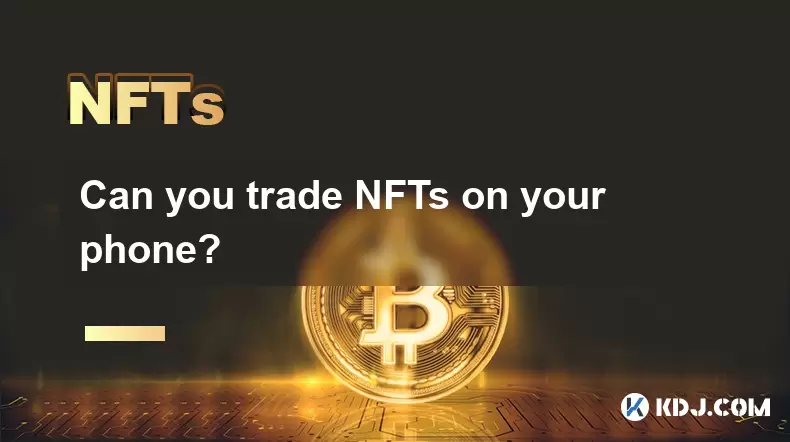
Can you trade NFTs on your phone?
Jul 18,2025 at 04:29am
Trading NFTs on Mobile DevicesYes, you can trade NFTs on your phone, and the process has become increasingly streamlined thanks to a variety of mobile...
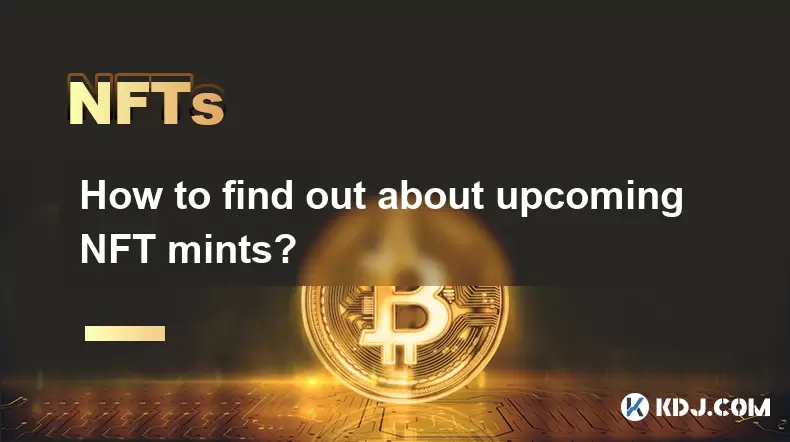
How to find out about upcoming NFT mints?
Jul 18,2025 at 11:50am
Exploring NFT Minting OpportunitiesUnderstanding the landscape of upcoming NFT mints is crucial for collectors, investors, and creators who wish to st...
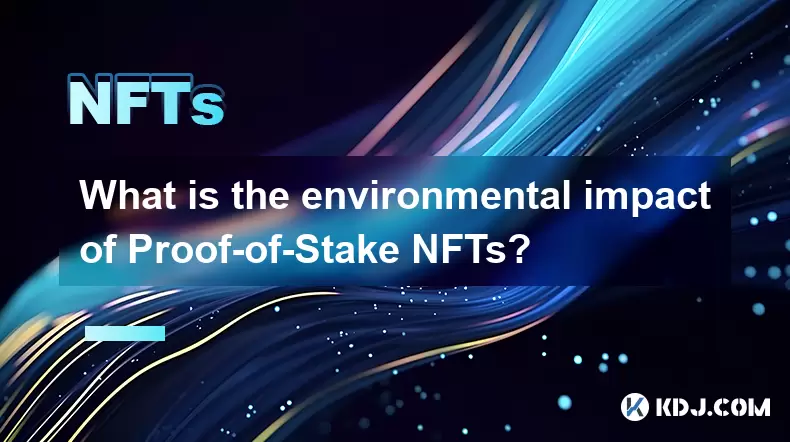
What is the environmental impact of Proof-of-Stake NFTs?
Jul 17,2025 at 07:14pm
Understanding the Basics of Proof-of-Stake NFTsProof-of-Stake (PoS) is a consensus mechanism used by blockchain networks to validate transactions and ...
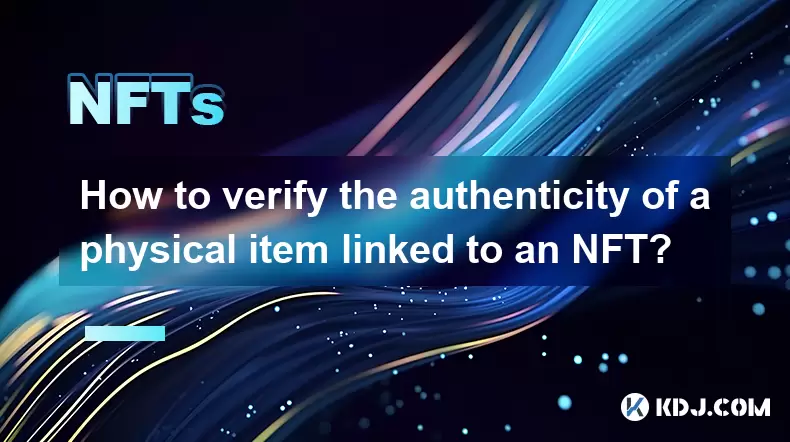
How to verify the authenticity of a physical item linked to an NFT?
Jul 18,2025 at 03:07pm
Understanding the Link Between NFTs and Physical ItemsWhen an NFT is linked to a physical item, it essentially acts as a digital certificate of owners...
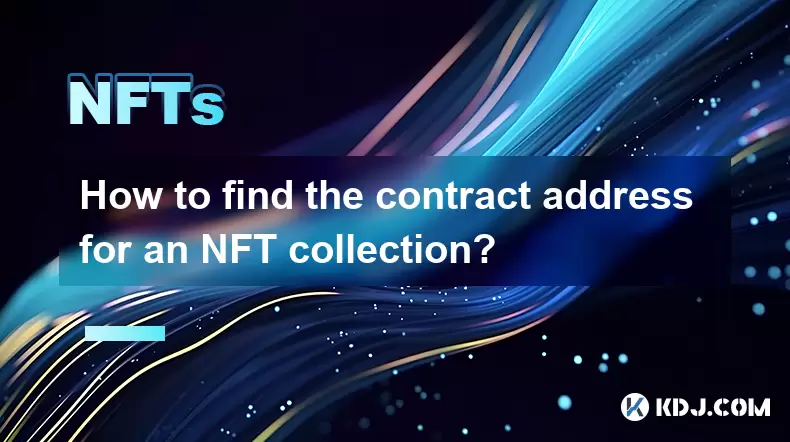
How to find the contract address for an NFT collection?
Jul 18,2025 at 11:56am
Understanding What a Contract Address IsIn the world of non-fungible tokens (NFTs), a contract address is a unique identifier assigned to a smart cont...
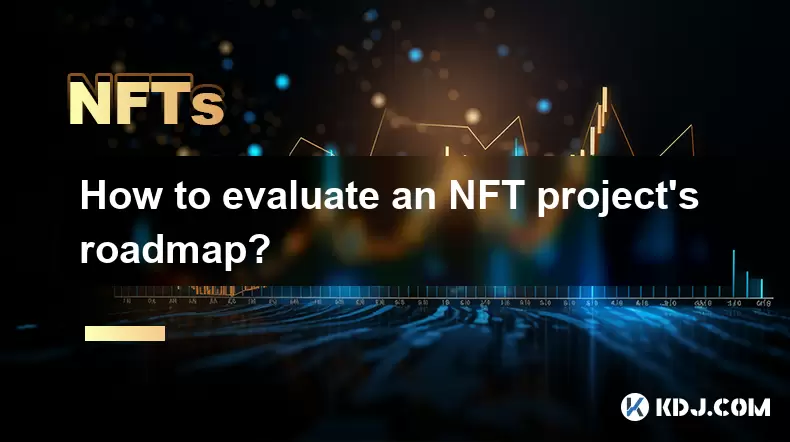
How to evaluate an NFT project's roadmap?
Jul 18,2025 at 01:21am
Understanding the Basics of an NFT Project RoadmapAn NFT project's roadmap is a strategic document that outlines the short-term and long-term goals of...

Can you trade NFTs on your phone?
Jul 18,2025 at 04:29am
Trading NFTs on Mobile DevicesYes, you can trade NFTs on your phone, and the process has become increasingly streamlined thanks to a variety of mobile...

How to find out about upcoming NFT mints?
Jul 18,2025 at 11:50am
Exploring NFT Minting OpportunitiesUnderstanding the landscape of upcoming NFT mints is crucial for collectors, investors, and creators who wish to st...

What is the environmental impact of Proof-of-Stake NFTs?
Jul 17,2025 at 07:14pm
Understanding the Basics of Proof-of-Stake NFTsProof-of-Stake (PoS) is a consensus mechanism used by blockchain networks to validate transactions and ...

How to verify the authenticity of a physical item linked to an NFT?
Jul 18,2025 at 03:07pm
Understanding the Link Between NFTs and Physical ItemsWhen an NFT is linked to a physical item, it essentially acts as a digital certificate of owners...

How to find the contract address for an NFT collection?
Jul 18,2025 at 11:56am
Understanding What a Contract Address IsIn the world of non-fungible tokens (NFTs), a contract address is a unique identifier assigned to a smart cont...

How to evaluate an NFT project's roadmap?
Jul 18,2025 at 01:21am
Understanding the Basics of an NFT Project RoadmapAn NFT project's roadmap is a strategic document that outlines the short-term and long-term goals of...
See all articles

























































































